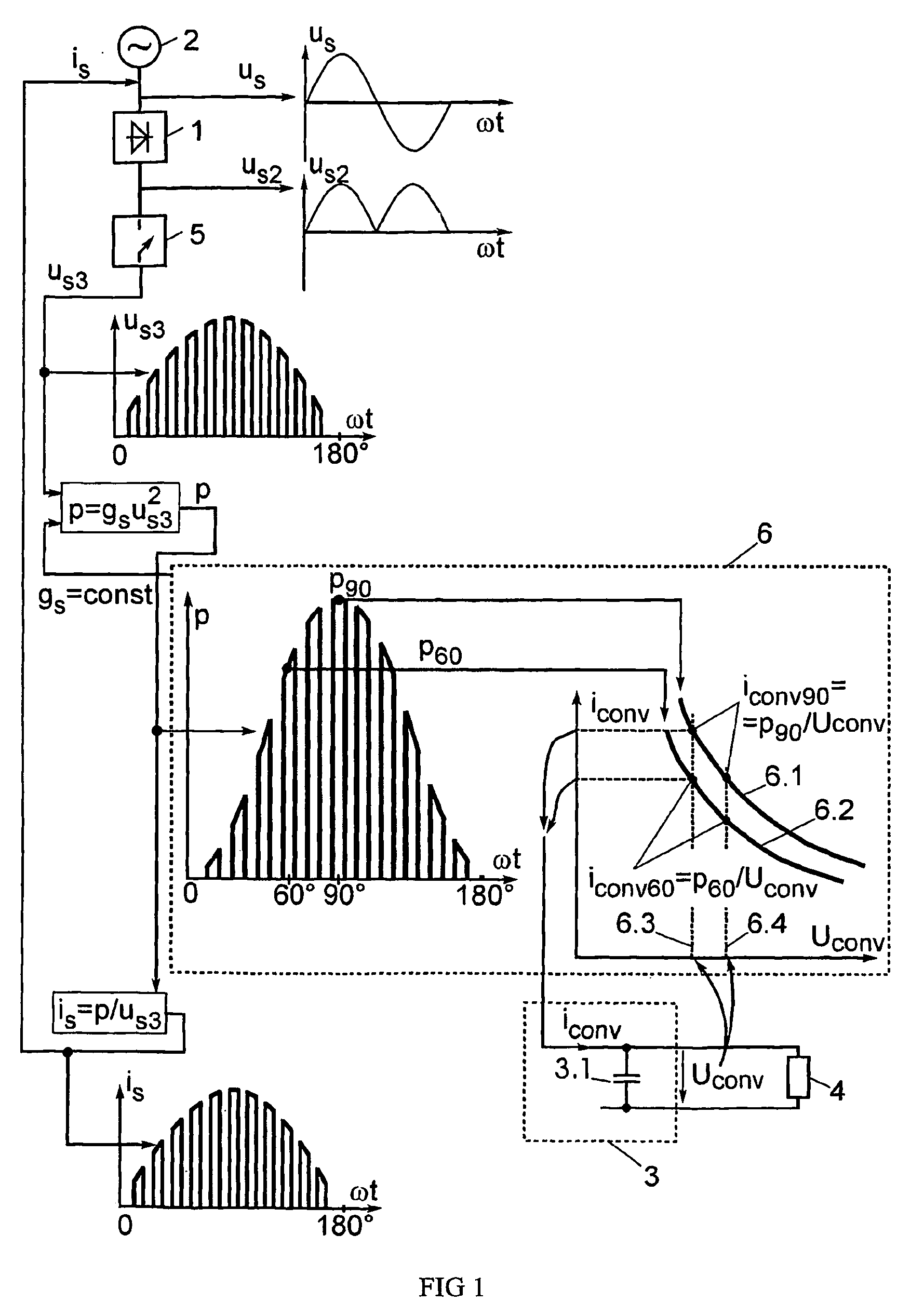Power factor correction method for AC/DC converters and corresponding converter
a technology of ac/dc converter and power factor correction, which is applied in the direction of ac-dc conversion, ac-electronic conversion, electric variable regulation, etc., can solve the problems of input impedance change and input impedance change, and achieve the effect of reducing the size of the transformer, reducing the switching current and losses in the chopper or inverter connected ahead of the converter
- Summary
- Abstract
- Description
- Claims
- Application Information
AI Technical Summary
Benefits of technology
Problems solved by technology
Method used
Image
Examples
Embodiment Construction
[0038]In the FIG. 1, there is shown generalized method for power factor correction in AC / DC converters. Alternating voltage us supplied from the mains 2 is delivered then to rectifier 1. After rectifying an unsmoothed half-waves of the mains voltage us2 are obtained. The rectified and smoothed voltage is delivered from smoothing filter 3 to load 4. To improve the power factor, the rectified voltage is not delivered directly to the smoothing filter 3. At first, the shape of the voltage us2 is changed by means of chopper 5. Hereby, DC voltage pulse train us3 appears wherein amplitude of the pulses is changing according to the instantaneous value of mains voltage. This pulse train is delivered to the converter circuit 6, which is able to change voltage-current relation analogously to transformer. The input admittance gs of this converter circuit is constant and it consumes instantaneous power p from the mains, which could be defined by multiplication of the input admittance gs and volt...
PUM
 Login to View More
Login to View More Abstract
Description
Claims
Application Information
 Login to View More
Login to View More - R&D
- Intellectual Property
- Life Sciences
- Materials
- Tech Scout
- Unparalleled Data Quality
- Higher Quality Content
- 60% Fewer Hallucinations
Browse by: Latest US Patents, China's latest patents, Technical Efficacy Thesaurus, Application Domain, Technology Topic, Popular Technical Reports.
© 2025 PatSnap. All rights reserved.Legal|Privacy policy|Modern Slavery Act Transparency Statement|Sitemap|About US| Contact US: help@patsnap.com



